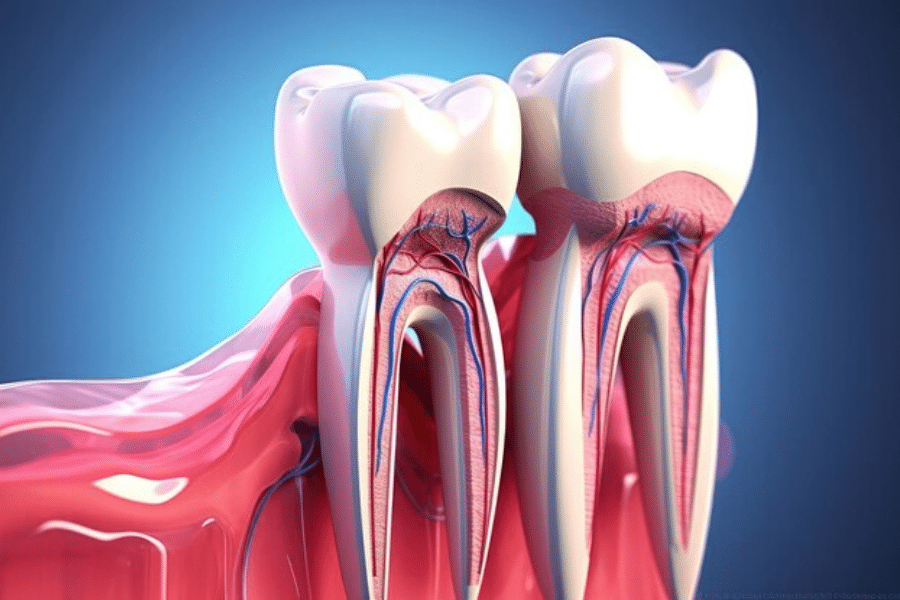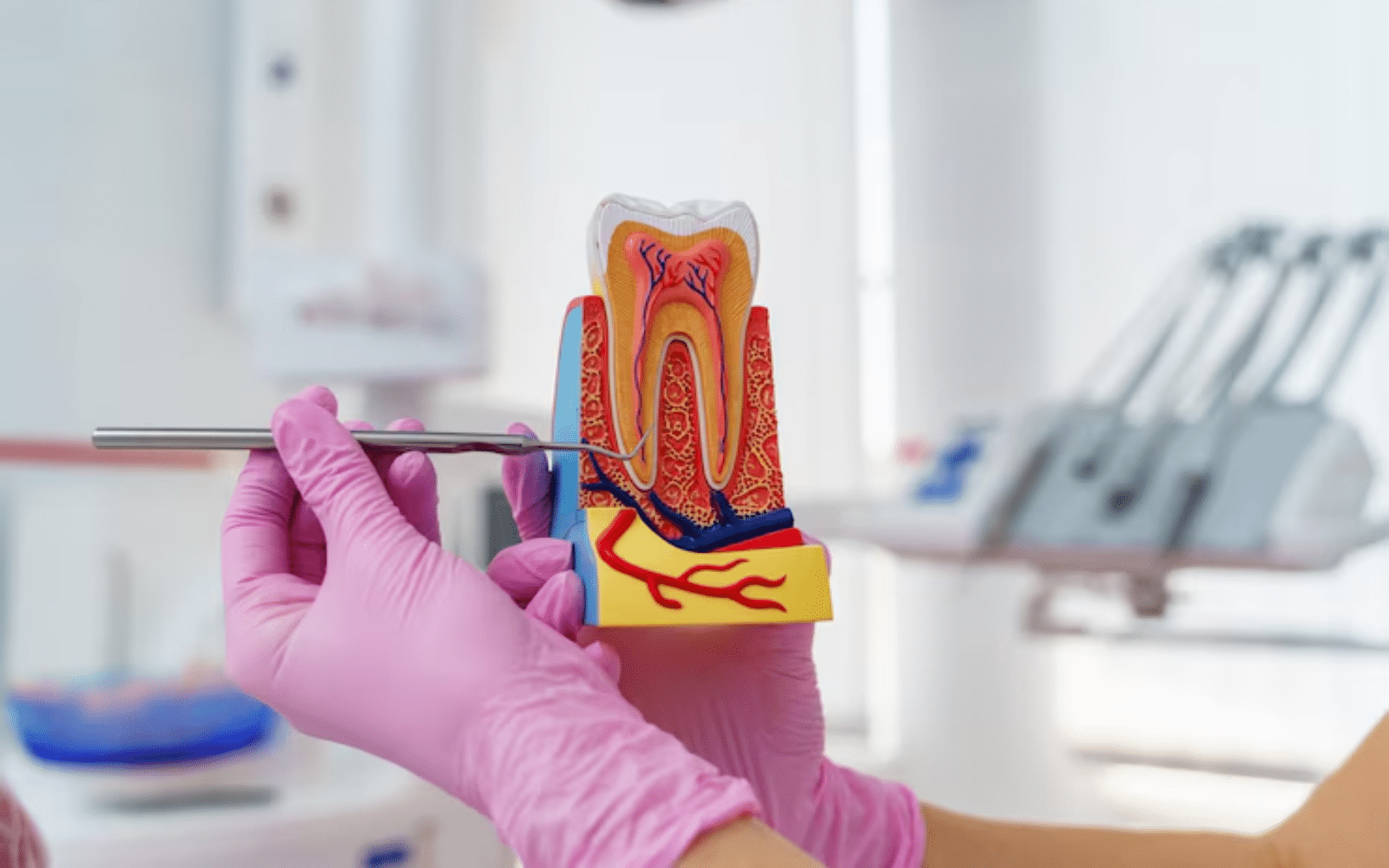How Long Does It Take to Recover After a Root Canal Treatment?
Root canal treatment is a common dental procedure designed to save a tooth that is severely damaged or infected. The procedure involves removing the damaged pulp from inside the tooth, cleaning and disinfecting the root canals, and then sealing them to prevent future infection. While root canals are highly effective and often save a tooth from extraction, many patients wonder about the recovery process and how long it will take to return to normal activities. In this comprehensive guide, we will explore the recovery timeline after a root canal treatment, what to expect during recovery, and how to ensure a smooth and successful healing process.
Understanding Root Canal Treatment
Before delving into the recovery process, it’s important to understand what a root canal involves. Here’s a brief overview of the procedure:
- Diagnosis: Your dentist will examine your tooth, take X-rays, and diagnose the extent of the damage or infection.
- Anesthesia: Local anesthesia is administered to numb the affected tooth and surrounding area.
- Access Opening: The dentist creates an opening in the top of the tooth to access the pulp chamber and root canals.
- Pulp Removal: The damaged or infected pulp is removed from the tooth.
- Cleaning and Shaping: The root canals are cleaned, disinfected, and shaped to prepare them for filling.
- Filling: The canals are filled with a biocompatible material called gutta-percha, and the access opening is sealed.
- Restoration: Depending on the tooth’s condition, a crown or other restoration may be placed to protect and strengthen the tooth.

Immediate Post-Treatment Care
The initial phase of recovery starts immediately after the root canal treatment. Understanding what to expect can help you manage discomfort and support the healing process effectively.
What to Expect Immediately After the Procedure
- Numbness: The anesthesia used during the procedure may cause numbness in the affected area, which typically wears off within a few hours.
- Discomfort: It’s normal to experience some discomfort or mild pain as the anesthesia wears off. This can usually be managed with over-the-counter pain relievers or as prescribed by your dentist.
- Sensitivity: Your tooth may feel sensitive to pressure or temperature changes for a few days following the treatment.
Post-Treatment Instructions
Your dentist will provide specific post-treatment instructions to ensure a smooth recovery. These may include:
- Avoiding Hard Foods: Stick to soft foods and avoid chewing on the treated tooth until it is fully restored with a crown or filling.
- Maintaining Oral Hygiene: Continue brushing and flossing, but be gentle around the treated area to avoid irritation.
- Taking Medications: Follow the prescribed medication regimen for pain management and to prevent infection.
Typical Recovery Timeline
Recovery from a root canal treatment can vary depending on several factors, including the complexity of the procedure, the tooth’s condition, and individual healing rates. However, a general timeline for recovery is as follows:
First 24-48 Hours
- Immediate Aftercare: In the first 24-48 hours, you may experience mild to moderate discomfort and swelling. This is normal and should gradually improve.
- Pain Management: Over-the-counter pain relievers like ibuprofen or acetaminophen can help manage any discomfort. Follow your dentist’s recommendations for pain management.
1 Week
- Discomfort: Any lingering discomfort or sensitivity should begin to subside within a week. If pain persists or worsens, contact your dentist.
- Check-Up: Your dentist may schedule a follow-up appointment to ensure that the tooth is healing properly and to discuss further restoration options.
2-4 Weeks
- Continued Healing: By this time, most of the initial discomfort should be gone. The treated tooth may still feel slightly sensitive, but this should diminish as healing progresses.
- Restoration: If not done immediately, the final restoration, such as a crown, will be placed during this period. This helps protect the tooth and restore its function.
1-3 Months
- Complete Healing: Full recovery and integration of the root canal treatment can take up to three months. The treated tooth should be fully functional and comfortable.
- Long-Term Care: Maintain regular dental check-ups to monitor the health of the treated tooth and ensure that no complications arise.
Factors Influencing Recovery Time
Several factors can affect how long it takes to recover after a root canal treatment:
1. Complexity of the Procedure
- Simple vs. Complex Cases: Routine root canal treatments on straightforward cases typically have a quicker recovery time compared to more complex cases that involve multiple canals or significant infection.
2. Tooth Location
- Front vs. Back Teeth: Recovery times can vary depending on the location of the treated tooth. Back teeth, which often have more canals and are subjected to greater forces during chewing, may require a longer recovery period.
3. Patient Health
- Overall Health: Your general health, including any underlying medical conditions, can influence your healing process. Conditions like diabetes or autoimmune disorders may affect recovery times.
4. Post-Treatment Care
- Adherence to Instructions: Following your dentist’s post-treatment care instructions plays a crucial role in ensuring a smooth recovery and avoiding complications.
Managing Post-Operative Discomfort
Managing discomfort effectively can contribute to a more comfortable recovery period. Here are some tips:
Pain Relief
- Medications: Use over-the-counter pain relievers as recommended by your dentist. If prescribed, take any antibiotics or pain medications according to the instructions.
- Cold Compress: Apply a cold compress to the outside of your face near the treated area to reduce swelling and numb discomfort.
Dietary Adjustments
- Soft Foods: Stick to soft foods and avoid chewing on the treated side of your mouth until your dentist gives the green light.
- Avoid Hot/Cold Foods: Stay away from extremely hot or cold foods and beverages that may cause sensitivity or discomfort.
Oral Hygiene
- Gentle Brushing: Brush your teeth gently around the treated area to avoid irritation. Use a soft-bristled toothbrush and fluoride toothpaste.
- Flossing: Continue to floss daily but be cautious around the treated tooth to prevent any damage.
Possible Complications and When to Seek Help
While root canal treatments are generally successful, complications can occasionally arise. Be aware of the following signs and symptoms that may require prompt attention:
Persistent Pain
- Significance: Persistent or severe pain that does not improve with over-the-counter pain relievers may indicate an issue with the root canal or a secondary infection.
- Action: Contact your dentist if you experience ongoing pain or discomfort beyond the initial recovery period.
Swelling
- Significance: Significant or worsening swelling around the treated tooth may indicate an infection or other complication.
- Action: Seek immediate dental attention if you notice swelling that does not subside or if it is accompanied by fever.
Fever or Unusual Symptoms
- Significance: Fever, chills, or other systemic symptoms may suggest an infection or reaction to the procedure.
- Action: Consult your dentist or healthcare provider if you experience any unusual or severe symptoms.
Long-Term Care and Maintenance
To ensure the long-term success of your root canal treatment and maintain your overall oral health, consider the following tips:
Regular Check-Ups
- Frequency: Continue to visit your dentist regularly for check-ups and cleanings to monitor the health of your treated tooth and overall oral health.
Good Oral Hygiene
- Routine: Maintain a consistent oral hygiene routine, including brushing twice a day, flossing daily, and using fluoride products.
Protective Measures
- Avoid Excessive Forces: Be cautious about chewing on hard or sticky foods that could damage the restoration or the treated tooth.
- Consider a Mouthguard: If you grind your teeth or engage in contact sports, consider using a mouthguard to protect your teeth and restorations.
Recovering from a root canal treatment is generally straightforward, with most patients experiencing a return to normal activities within a few days to a few weeks. By understanding the typical recovery timeline, adhering to post-treatment care instructions, and managing discomfort effectively, you can support a smooth and successful recovery. If you experience any unusual symptoms or complications, don’t hesitate to contact your dentist for guidance.
Proper post-operative care and regular dental visits will help ensure the long-term success of your root canal treatment and maintain your overall oral health. If you have any questions or concerns about your recovery, reach out to your dental professional for personalized advice and support.
For more information or to schedule a follow-up appointment, contact your local dental practice today. Your commitment to care and maintenance will contribute to a healthy, functional, and pain-free smile.


